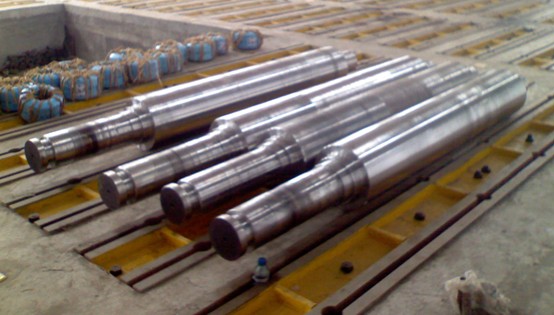In the manufacturing of industrial rolls, heat treatment is a critical process that determines the material’s overall performance, durability, and resistance to wear. Given the demands placed on rolls in various industrial applications, achieving the right balance between hardness and toughness is essential. The heat treatment process for rolls generally includes three key stages: annealing, quenching, and tempering. Each of these stages plays a unique role in shaping the material’s mechanical properties and ensuring that it meets the stringent demands of industrial use.
The first stage, annealing, is essential for preparing the roll material for subsequent processing. During annealing, the roll is heated to a specific temperature and then cooled at a controlled, gradual rate. This process relieves internal stresses that can build up within the material during its initial formation, making the structure more uniform and stable. Annealing not only enhances the roll’s ductility and toughness, but it also refines the material’s microstructure, which is particularly beneficial for machining. With reduced internal stresses and increased ductility, the roll becomes easier to work with in later production stages, facilitating accurate machining and reducing the risk of cracking during processing.
Following annealing, the next step is quenching, a rapid cooling process that significantly alters the roll’s hardness. Quenching involves heating the roll to a specific temperature and then quickly cooling it, usually by immersion in a medium such as water or oil. This sudden cooling changes the material’s microstructure, resulting in a significant increase in hardness and strength, which is essential for wear resistance in heavy-duty applications. However, this increase in hardness also brings a degree of brittleness. Rolls that have been quenched may become more prone to cracking or fracturing under high stress, which is not ideal for applications where resilience is key. Thus, quenching often needs to be followed by additional treatment to achieve a more balanced set of properties.
To address the brittleness introduced by quenching, tempering is employed as a final step in the heat treatment process. Tempering involves reheating the hardened roll to a lower temperature, then allowing it to cool at a controlled rate. This process helps reduce internal stresses and adjusts the roll’s mechanical properties, making it more ductile and tough. By tempering the roll, manufacturers can achieve an optimal balance between hardness and toughness, creating a product that not only resists wear but is also less likely to crack under operational stresses. The roll thus becomes more resilient, with improved shock resistance and the ability to withstand continuous, heavy-duty use in harsh industrial environments.
The heat treatment process in roll production—comprising annealing, quenching, and tempering—is vital for enhancing the material’s properties and ensuring optimal performance. Each stage contributes specific improvements: annealing for machinability, quenching for hardness, and tempering for toughness. Together, these steps produce a well-rounded roll capable of withstanding the mechanical and environmental stresses typical in industrial applications.
Post time: Nov-15-2024





